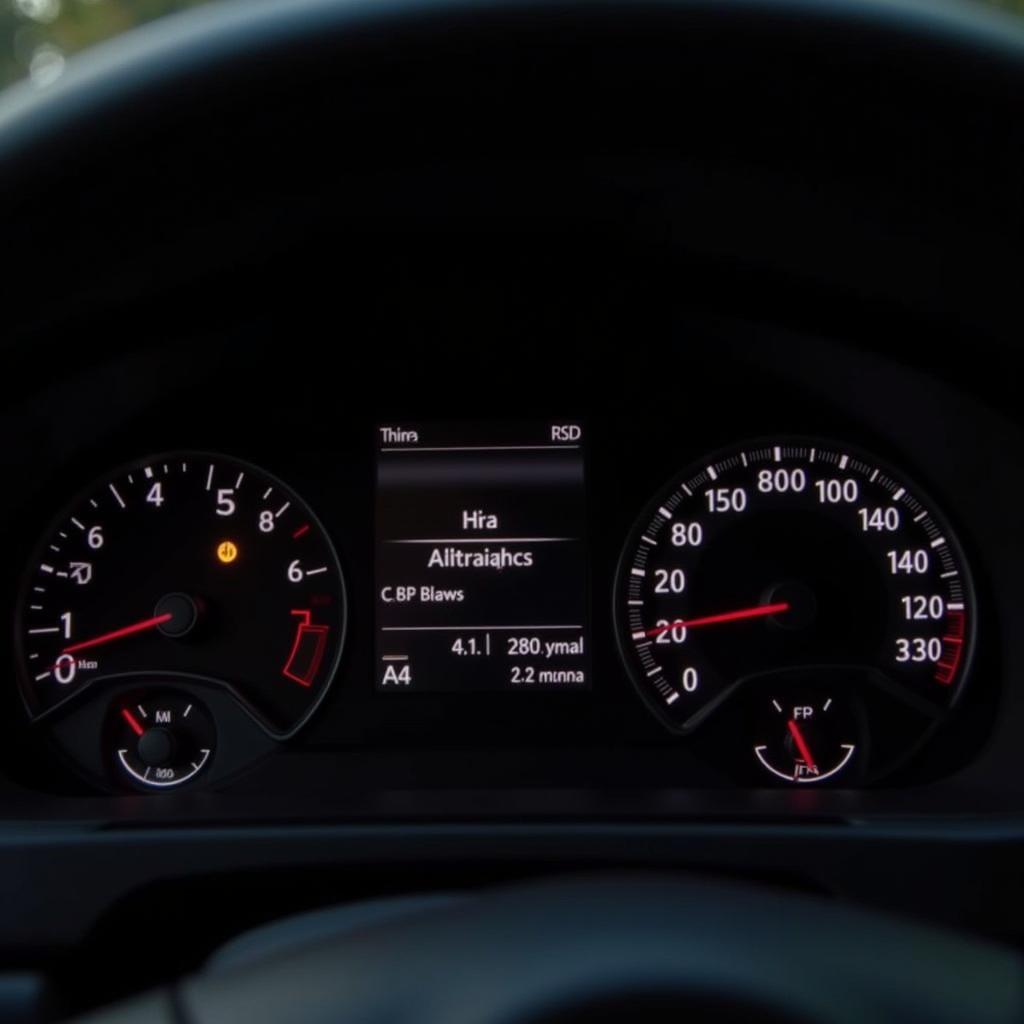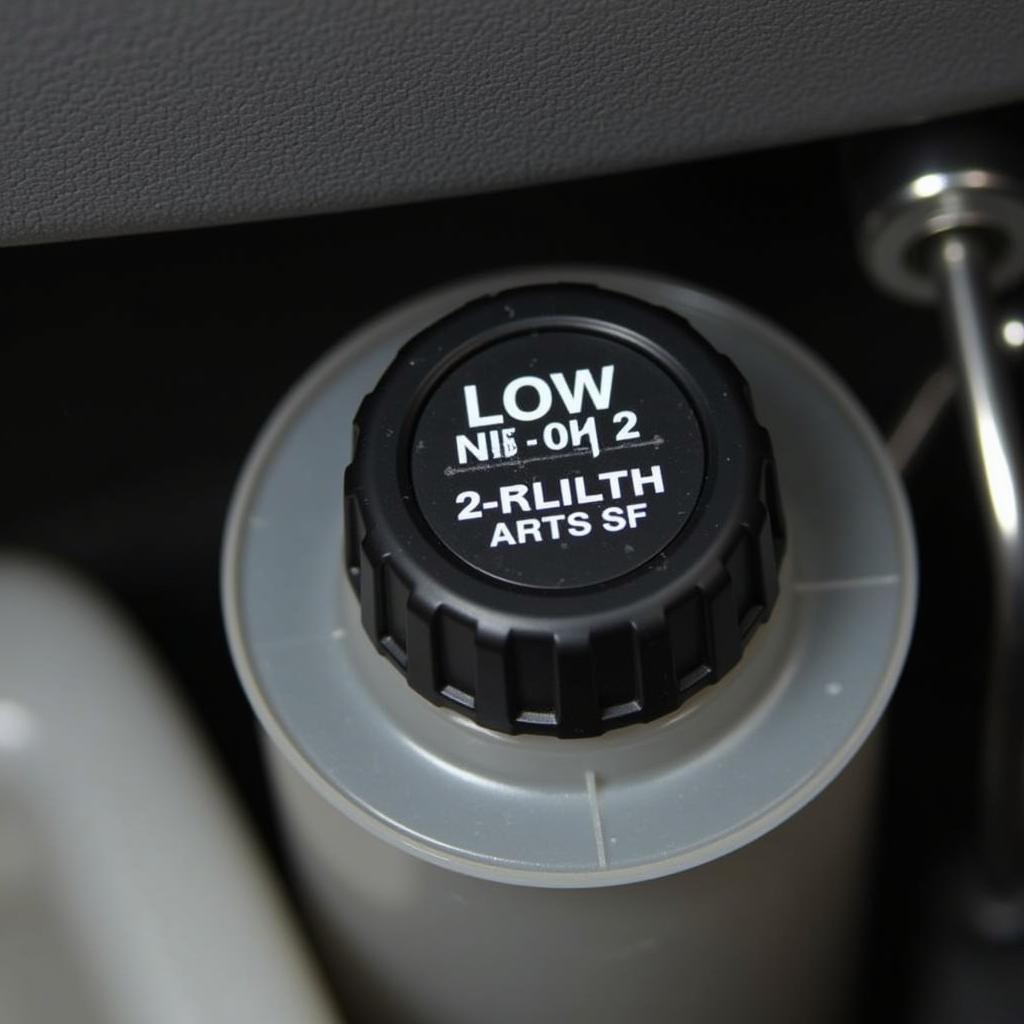The “brake pad warning” light on your Mercedes-Benz ML350 can be a bit alarming, but it’s not always a cause for panic. This light is a signal that your brake pads are getting thin and need attention. In this comprehensive guide, we’ll explore the reasons behind this warning, how to interpret the light, and the necessary steps to take.
Understanding the Brake Pad Warning Light
The brake pad warning light is designed to alert you when your brake pads have worn down to a specific limit. This limit is determined by the manufacturer and varies depending on the vehicle model. When the brake pads reach this limit, the warning light illuminates on your dashboard, letting you know it’s time for a brake inspection and potentially a pad replacement.
What Causes the ML350 Brake Pad Warning?
Here are some common reasons why your ML350’s brake pad warning light might be on:
- Worn brake pads: The most common reason for the warning light is simply that your brake pads are getting worn down. Over time, the friction material on your brake pads wears away due to the constant pressure of braking.
- Faulty sensor: Your ML350’s brake system has a sensor that measures the thickness of the brake pads. If this sensor is faulty or damaged, it may trigger the warning light even if your brake pads are still in good condition.
- Electrical issues: Sometimes, electrical problems within your vehicle’s brake system can cause the warning light to illuminate. These issues could range from loose connections to more complex problems.
How to Interpret the Brake Pad Warning Light
When the brake pad warning light comes on, don’t ignore it! It’s a signal that your brake system needs attention. Here’s what you should do:
- Check the warning light: Make sure it’s the brake pad warning light and not another indicator.
- Inspect your brake pads: If you have some basic mechanical knowledge, you can visually inspect your brake pads. Look for signs of wear, such as thin pads, grooves, or cracks.
- Schedule a brake inspection: It’s always best to have a professional mechanic inspect your brake system. They can determine the cause of the warning light and assess the condition of your brake pads and other components.
The Consequences of Ignoring the Warning Light
Ignoring the brake pad warning light can lead to serious consequences, including:
- Reduced braking performance: Worn brake pads can significantly affect your vehicle’s ability to stop safely.
- Damage to other brake components: If you continue to drive with worn brake pads, the friction material can wear down to the point of contacting the brake rotors, causing damage and potentially leading to brake failure.
- Increased braking distance: Worn brake pads result in a longer braking distance, increasing the risk of accidents.
Replacing Brake Pads
If your brake pads need to be replaced, you’ll need to schedule an appointment with a qualified mechanic. The cost of replacing brake pads can vary depending on several factors:
- Make and model of your vehicle: Different vehicles require different types of brake pads.
- Type of brake pads: There are various types of brake pads, each with its own price point.
- Labor costs: Labor costs can vary depending on the location and the mechanic’s expertise.
Other Potential Issues Related to the Brake Pad Warning Light
While worn brake pads are the most common cause of the warning light, other issues could be responsible. It’s essential to have a qualified mechanic diagnose the problem accurately.
Expert Insights
“It’s important to remember that the brake pad warning light is a proactive measure designed to protect your safety. It’s always better to be safe than sorry, so if the light is on, it’s time to have your brake system inspected.” – John Smith, Master Mechanic
“The brake pad warning light isn’t always an immediate cause for concern, but it’s crucial to address it promptly. Regular maintenance and inspections can prevent more serious issues and keep your braking system functioning optimally.” – Sarah Jones, Certified Automotive Technician
Conclusion
The ML350 brake pad warning light serves as an essential reminder that your brake system requires attention. Ignoring this warning can lead to dangerous consequences, potentially affecting your vehicle’s braking performance and safety. If you notice the warning light on, schedule a professional inspection and be prepared to replace your brake pads if necessary. Remember, a properly functioning brake system is crucial for your safety and the safety of others.
FAQ
- Q: How often should I have my brake pads checked?
A: It’s recommended to have your brake pads checked at least once a year, or every 5,000-7,500 miles, whichever comes first. - Q: Can I change the brake pads myself?
A: While it’s possible to change brake pads yourself, it’s generally recommended to leave this task to a qualified mechanic, as it can be a complex process. - Q: What are some signs that my brake pads are worn?
A: Some signs include a squealing or grinding noise when braking, a feeling of the brake pedal going to the floor, and increased braking distance. - Q: Can I drive with the brake pad warning light on?
A: It’s not recommended to drive with the brake pad warning light on for an extended period. Your brake pads are nearing the end of their lifespan, and your braking performance will be compromised. - Q: How long can I drive with worn brake pads before they need replacing?
A: The lifespan of brake pads varies, but it’s usually between 25,000-50,000 miles. It’s best to have them checked regularly. - Q: What are the different types of brake pads?
A: There are several types, including ceramic, semi-metallic, and organic. Each type offers different benefits, such as noise reduction, performance, and durability. - Q: What are some tips for keeping my brake pads in good condition?
A: It’s essential to avoid hard braking and sudden stops as much as possible. Regularly inspect your brake pads, have your brake system checked periodically by a qualified mechanic, and ensure your brakes are properly maintained.


